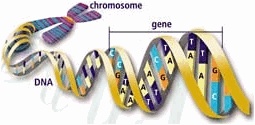

General observation:
Genetically Modified (GM) foods are produced from genetically modified organisms (GMO) which have had their
genome altered through genetic engineering techniques. The general principle of producing a GMO is to
insert DNA that has been taken from another organism and modified in the laboratory into an organism's
genome to produce both new and useful traits or phenotypes. GM Foods have been available since the
1990s, with the principal ones being derived from plants; soybean, maize, canola and cotton seed oil.
More on "Genetically Modified Food"
The shelves of just about every American supermarket are lined with foods that have been genetically
altered to improve the product's taste, shelf life, or resistance to insects and other pests.
Tomatoes, potatoes, squash, corn, and soybeans have been genetically altered through the emerging
science of biotechnology. So have ingredients in everything from ketchup and cola to hamburger buns
and cake mixes.
Most of the foods we eat today are the result of crossbreeding--a technique that relies on the laws
of inheritance first described by Gregor Mendel in the 19th century--to obtain desired characteristics.
Crossbreeding is inexact. It also involves trial-and-error and lots of time. Although biotechnology is a
more efficient way to introduce new traits, there are concerns. Some worry about the possibility of
introducing new allergens into foods. Others worry about the potential effects that altered crop
species may have on wildlife and other plants.
However, many researchers say the ability of biotechnology to isolate and introduce a specific gene
or just a few genes makes outcomes more predictable, including the ability to predict risks. Supporters
say that biotechnology is a tool that allows scientists and farmers to reduce damage from pesticides,
boost crop yields, and improve flavor, texture and nutritional content.
Source: U. S. Food and Drug Administration
First Biotech Tomato Marketed
A tomato developed through biotechnology was declared by FDA last May to be as safe as tomatoes bred by
conventional means. This was the first time the agency had evaluated a whole food produced by
biotechnology, techniques that allow scientists to modify the genetic material of living things. The
tomato is being marketed under the name FLAVR SAVR. The manufacturer, Calgene, Inc., of Davis, Calif.,
says FLAVR SAVR tomatoes are bred to stay firm after harvest and so may remain on the vine longer to
ripen to full flavor So they won't be crushed on the way to market, other tomato varieties must be
harvested while they are green and firm. After shipment, processors induce ripening by treating the
tomatoes with ethylene gas, the natural ripening agent in tomatoes.
The company has been working with FDA for several years developing new products through biotechnology,
and asked FDA to review FLAVR SAVR in August 1991. After evaluating the data submitted by Calgene, FDA
scientists concluded that the FLAVR SAVR tomato has not been significantly altered and is as safe to
eat as other tomatoes. This assessment was supported by the agency's Food Advisory Committee, a panel
of experts from outside FDA. Since the FLAVR SAVR tomato maintains the essential characteristics of
traditionally developed tomatoes, FDA will not require special labeling. However, Calgene said it
plans to provide point-of-sale information for consumers about the development of the new product
through genetic engineering.
From: U. S. Food and Drug Administration
Center for Food Safety and Applied Nutrition
FDA Consumer: September 1994
Source: U. S. Food and Drug Administration
Here you'll find much more info on GM Food etc.
zurück zur Übersicht
|

